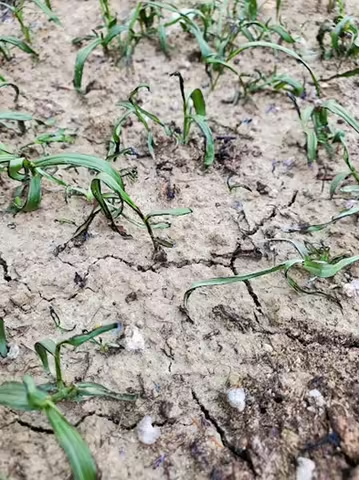
URBANA, Ill. – As gardeners know, weeds will grow nearly anywhere. Even cracks in the pavement can sustain plant life if there is soil, water, and light. Whether a plant is considered a weed depends on how it is affecting the intended use of the site and who is looking at it.
“A white oak seedling is not typically considered a weed, but if it’s growing in a vegetable garden it is often treated as one,” says Sarah Vogel, University of Illinois Extension horticulture educator. “Some gardeners eliminate broadleaves to maintain a perfectly manicured lawn, though if you’re a hungry pollinator insect, a dandelion, violet, or clover flower may be a welcome sight.”
Weeds compete with desirable species for available moisture and nutrients. They can harbor pests and diseases, or even present health hazards. Occasionally weeds are so troublesome that removal is required by the Illinois noxious weed law. Characteristics that make weeds so successful also makes them difficult to control, and gardeners should consider a management strategy to keep weeds in check.
Because weeds reproduce through many means, they must be managed at various times throughout the growing season. The most successful approach is through a combination of control methods and proper timing. To minimize cost and environmental effects, use mechanical or cultural techniques to control weeds before trying pesticides.
The first line of defense against weeds is keeping desirable plants healthy. Choose disease-resistant varieties of species that are adapted to the site where they will be planted. “Place the right plant in the right site, scout for pests and diseases regularly, provide adequate water and fertilizer, and cover bare soil for weed prevention,” says Vogel.
Keeping a healthy, dense stand of turfgrass is the best way to keep broadleaves out. In established turf, mow lawns high before weeds produce flowers. Lawns mowed at higher deck height have deeper roots and fewer weeds.
In landscape or vegetable beds, apply mulch to suppress weeds, prevent soil temperature fluctuations, retain moisture, and add organic matter back to the soil. Organic mulch sources are wood chips, shredded bark, straw, grass clippings, shredded leaves, or compost. Inorganic options include landscape fabric, punctured black plastic, or clear plastic which creates a heating effect called solarization.
A mechanical approach to weed suppression is best achieved when weeds are small. Tilling, hoeing, shoveling, using a flame weeder, or simply weeding by hand are efficient but may be impractical for large plots. Some perennial weeds may require repeat management.
Cover crops are another way to manage weeds in both new and established areas. Some species are chosen for their ability to replenish soil nutrients, while others improve soil tilth, or its physical condition. Cover crops keep weeds in check by forming a living mulch since they grow densely. When the garden bed is ready for use, some cover crops can be turned under and put to work as green manure.
Chemical control may not be necessary to treat weeds, and most herbicides are not recommended for vegetable gardens. How effective a product is depends on the type of herbicide used, when it’s applied, coverage, and environmental conditions. Applying unnecessary herbicides can cause harm to plants, soil, water, beneficial insects like pollinators, or humans. Always read and follow label directions when using pesticides.
When establishing a new garden plot, manage weeds before planting or you may wind up in a losing battle all growing season. If the pressures of weeds in your garden beds become too demanding, you may consider alternative growing systems like raised beds or containers. Whatever method you choose, controlling weeds will keep your garden healthier and more attractive.
For more information on weed control options, connect with your local Illinois Extension county office at go.illinois.edu/ExtensionOffice.
SOURCE: Sarah Vogel, Horticulture Educator, University of Illinois Extension
ABOUT EXTENSION: Illinois Extension leads public outreach for University of Illinois by translating research into action plans that allow Illinois families, businesses, and community leaders to solve problems, make informed decisions, and adapt to changes and opportunities.
